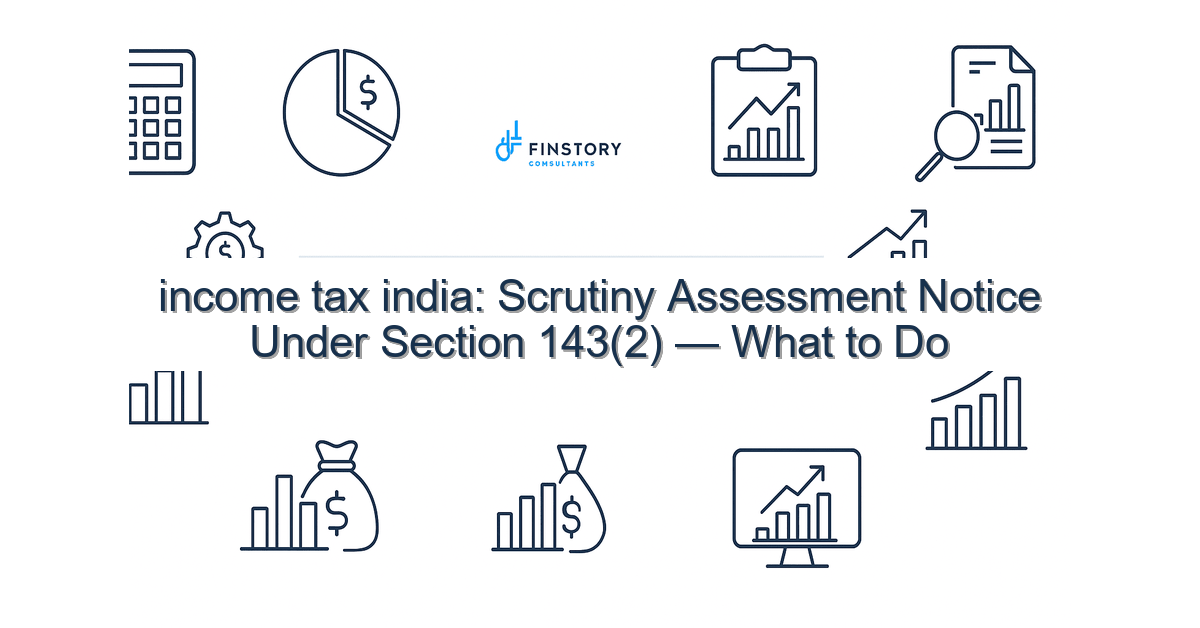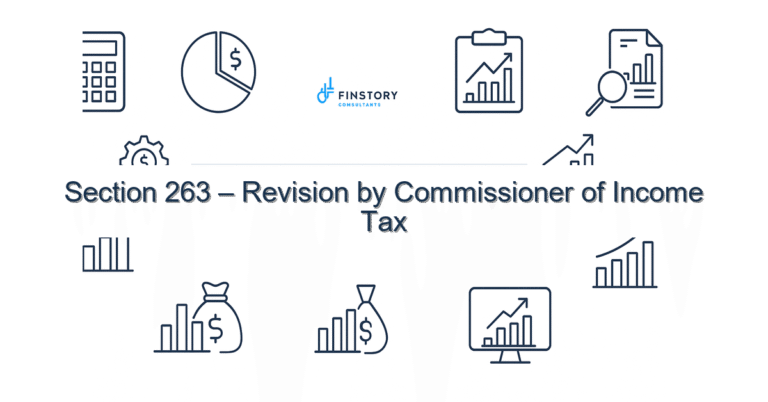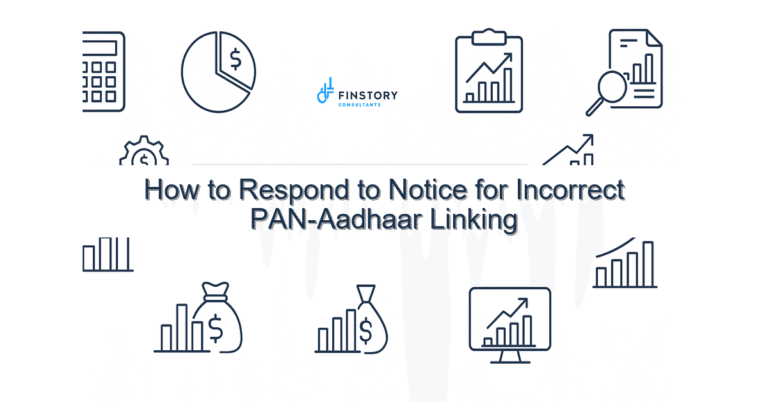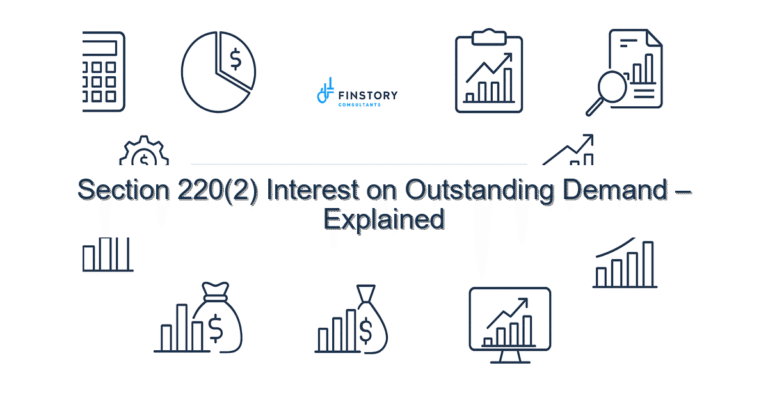income tax india: Scrutiny Assessment Notice Under Section 143(2) — What to Do
Getting a scrutiny assessment notice can feel like a sudden audit storm — whether you’re a salaried employee with Form 16, a founder reconciling investor payouts, or a CFO juggling FP&A and compliance. You’re not alone; the key is a calm, methodical response.
Summary: A notice under Section 143(2) starts a scrutiny of your return — read it carefully, reconcile AIS/26AS vs your books, assemble proofs (TDS/TCS, bank statements, capital gains indexation docs, proofs for Section 80C limit claims), respond within the timeline or ask for more time, and engage a tax professional if numbers don’t match.
What’s the real problem in income tax india?
Section 143(2) notices are issued when the Assessing Officer wants to examine an ITR more closely for a particular AY/PY. With the CBDT’s faceless assessment push and automated data-matching (AIS/26AS, TDS/TCS feeds), mismatches or missing documentation trigger scrutiny. The practical problem: many taxpayers and finance teams underestimate reconciliation work and the narrow window to respond.
- Symptom: Unexpected addition proposed due to mismatch between Form 26AS/AIS and declared income.
- Symptom: Disallowed expenses claimed by professionals or startups because books aren’t backed by invoices or bank trails.
- Symptom: Capital gains questions where indexation or purchase cost documentation is incomplete.
- Symptom: TDS/TCS shortfall or wrong PAN reported in TDS statements.
What people get wrong
- Panicking and giving informal explanations instead of preparing a written, reconciled response with documentary evidence.
- Assuming online portals (e-filing or faceless system) will automatically fix mismatches — you must proactively reconcile AIS/26AS and Form 26AS with your books.
- Ignoring small discrepancies (TDS of Rs. 1,000 or brokerage differences) that aggregate into significant additions or penalties under Section 270A.
- Failing to check timelines around AY/PY, CBDT circulars, and the ITR filing last date for relevant relief or belated filing options.
A better approach
Follow a simple, document-first framework to reduce risk and speed resolution.
- Clarify the notice: note the AY/PY, the specific issues raised, and the response deadline; check whether it’s faceless or AO-specific.
- Reconcile data: pull AIS/26AS, Form 26AS, TRACES, TDS/TCS certificates, bank statements, salary slips, Form 16, demat transaction statements and ledger entries.
- Assemble evidence: invoices, bank proofs for Section 80C investments, proofs for capital gains indexation (purchase invoices, transfer deeds), and supporting calculations (new vs old regime slabs comparison if salary structure changed).
- Prepare a concise response: a cover note + reconciliations (line-by-line), annexures and a timeline of events. Use the e-filing portal or faceless response channel and keep a communications log.
- Escalate when needed: request time formally if documents require time, engage a CA, and prepare for hearings (virtual/in-person) or appeal routes if assessment is adverse.
Short story: A SaaS founder received a notice for an AY where ESOP tax entries didn’t reconcile with Form 26AS. After a week-long reconciliation and providing demat ledger + payroll computation, the proposed addition of ₹9 lakh was reduced to ₹1.2 lakh — largely avoided through quick, documented responses.
Quick implementation checklist
- Read the Section 143(2) notice fully — note date, AY/PY, and items queried.
- Download AIS/26AS and compare with declared income and TDS/TCS certificates.
- Gather Form 16, salary breakup, bank statements, invoices, sale deeds (for property), demat statements and capital gains worksheets.
- Prepare reconciliation workbook: TDS line-item vs declared TDS, capital gains calculation with indexation, proof for Section 80C limit claims.
- Draft a one-page cover letter summarising findings and attach annexures; highlight any genuine data-entry errors and proposed corrections.
- Respond via the prescribed channel before the deadline or file an application for extension with a valid reason.
- If numbers don’t match, consult your CA or tax counsel immediately — consider filing a revised return if that fixes the issue and is allowed.
- Save all communications — notices, e-mails, acknowledgements — in a central compliance folder.
What success looks like
- Reduction or withdrawal of proposed additions in the assessment order.
- No penalties under Section 270A for negligence — or significantly mitigated penalties.
- Faster closure via faceless assessment with clear written record of reconciliations.
- Clean books for future AYs: fewer data mismatches on AIS/26AS and fewer notices.
- Finance team confidence: established playbook for future scrutiny with dashboards for ITR filing last date and Section 80C limit tracking.
Risks & how to manage them
- Risk: Penalty or addition due to missing proof — Manage: submit contemporaneous invoices, bank evidence, and reconciliations early.
- Risk: Incorrect TDS/TCS reconciliation — Manage: check TRACES, request TDS correction from deductor and update Form 26AS.
- Risk: Late response — Manage: request extension formally and document reasons; always send an interim reply.
- Risk: Audit escalation — Manage: professional representation, offer reasonable explanations supported by documents and consider settlement options where applicable.
Tools & data
- Official portals: Income Tax e-Filing, TRACES for TDS, AIS/26AS download.
- Accounting systems: Tally, QuickBooks, Zoho Books — export bank reconciliation reports.
- Capital gains calculator with indexation support and property sale ledger (stamp duty, transfer costs).
- Internal checklists and a shared folder for documents (PDF invoices, bank statements, Form 16, Form 26QB where applicable).
- Internal links: [link:ITR guide] for filing basics and timelines like ITR filing last date, and resources on new vs old regime slabs.
Next steps
If you’ve received a Section 143(2) notice, start with a calm scan: note deadlines, pull AIS/26AS and Form 16, and set a 48–72 hour internal turnaround to assemble the key documents. If the variance is material or legal interpretation is required (ESOPs, capital gains indexation, or Section 80C limit disputes), engage a CA immediately. Finance heads should run a quarterly reconciliation of AIS/26AS vs books to reduce future notices.
Conclusion: Timely, documented, and professional responses are the best defence against scrutiny under Section 143(2). Whether it’s a salaried taxpayer checking Form 16 and new vs old regime slabs, a professional ensuring compliance with TDS/TCS, or a founder reconciling capital gains and investor entries, a clear audit trail and quick reconciliation cut risk in income tax india.
Work with Finstory. If you want this done right—tailored to your operations—we’ll map the process, stand up the dashboards, and train your team. Let’s talk about your goals.
📞 Need help with Income Tax in India?
Book a 20-min consultation with our tax team. Individuals, founders & MSMEs welcome.
Prefer email or phone? Write to info@finstory.net
or call +91 44-45811170.






